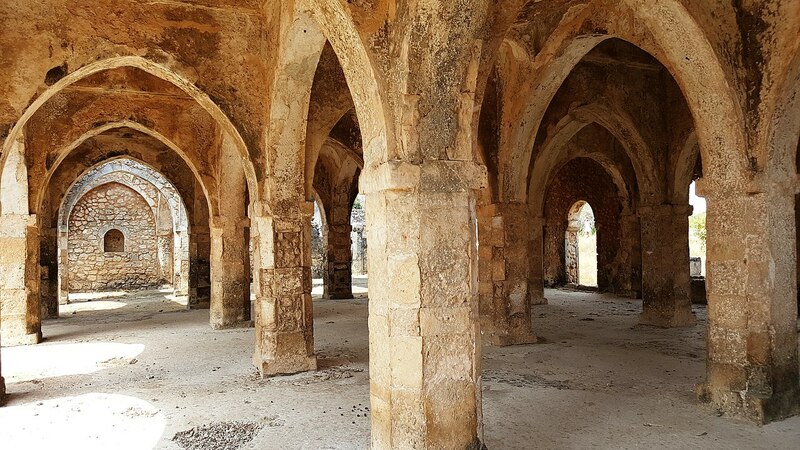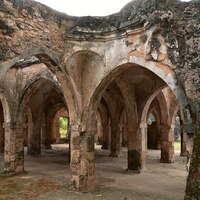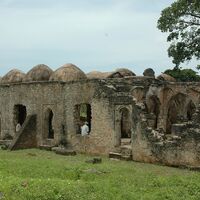Great Mosque of Kilwa
Type:
Mosques
Date:
Major construction phases in 1130–70 and 1310–33
Location or Findspot (Modern-Day Country):
Tanzania
Description:
The congregational mosque of Kilwa Kisiwani, an island off the coast of modern-day Tanzania, is one of the earliest surviving mosques of what is called the Swahili Coast. During the eleventh and twelfth centuries, Islam was increasingly adopted in East Africa. The Swahili language developed as the local Bantu language began to adopt Arabic and Persian words from merchant traders, who also introduced Islam to the region.
The earliest part of the mosque is the smaller northern prayer hall, much of which was originally built with coral. The first major phase of construction dates to the mid-twelfth century, with a subsequent major expansion taking place during the reign of Sultan al-Hasan ibn Sulaiman (r. ca. 1310–33), the period of greatest prosperity in Kilwa. Ceramics found at the site offer clues to the port's importance in the Indian Ocean trade network.
The earliest part of the mosque is the smaller northern prayer hall, much of which was originally built with coral. The first major phase of construction dates to the mid-twelfth century, with a subsequent major expansion taking place during the reign of Sultan al-Hasan ibn Sulaiman (r. ca. 1310–33), the period of greatest prosperity in Kilwa. Ceramics found at the site offer clues to the port's importance in the Indian Ocean trade network.
Relevant Textbook Chapter(s):
7,
9
Repository and Online Resources:
• Visit the website of the Zamani Project for 3D models, plans, and photographs of the Kilwa Kisiwani ruins.
Image Credits:
Wikimedia Commons



